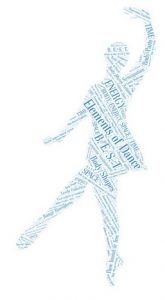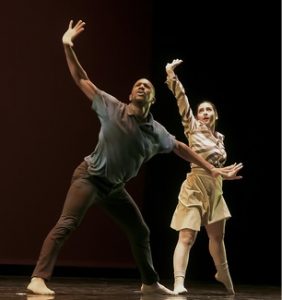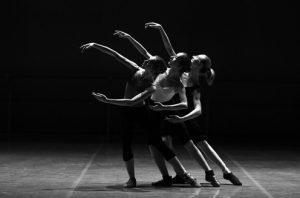
| “A dance, as a work of art, must be constructed as well as a beautiful building…. A dance must have a beginning, development, and climax – just as a building has foundations, walls, and roof.” -Ted Shawn |
What are the Elements of Dance?
The Elements of Dance are the basic building blocks of dance that help us identify and describe movement, assisting in the ability to analyze, interpret and speak/write about dance as an artistic practice. When viewing dance, we want to put into words what we are witnessing by analyzing its most important qualities. The elements of the dance provide us with the tools to do so.
In dance, the body can be in constant motion and even arrive at points of stillness. However, even in stillness, the dancers are inherently aware of themselves. No matter the case, all forms of dance can be broken down into their primary elements: BODY, ENERGY, SPACE, and TIME. To easily remember the dance elements, we use the acronym: B. E. S. T., which stands for BODY, ENERGY, SPACE, and TIME. Dance can be seen as the use of the BODY with different kinds of ENERGY moving through SPACE and unfolding in TIME.
Let’s take a quick look at the elements of dance before we dig in further.
Watch This
Randy Barron, Teaching Artist on the Kennedy Center’s National Roster, made this video to explain the Elements of Dance:
Body
The body is the dancer’s instrument of expression. When an audience looks at dance, they see the dancer’s body and what is moving. The dance could be made up of a variety of actions and still poses. It could use the whole body or emphasize one part of the body. Exploring body shapes and movement actions increases our awareness of movement possibilities.

Body Shapes
The choreographer who is designing a dance may look at their dancers as sculpture. They choose shapes for the dancers to make with their bodies. These can be curved, straight, angular, twisted, wide, narrow, symmetrical, or asymmetrical. These shapes can be geometric designs, such as circles or diagonals. They could make literal shapes such as tree branches or bird wings. They can also make conceptual shapes (abstract) such as friendship, courage, or sadness. Sometimes a choreographer emphasizes the negative space or the empty area around the dancers’ bodies instead of just the positive space the dancer occupies. Look at the positive and negative spaces in Fig 2.

Body Moves/Actions
Dance movements or actions fall into two main categories:
Locomotor: (traveling moves) walk, run, jump, hop, skip, leap, gallop, crawl, roll, etc.
Nonlocomotor: (moves that stay in place) melt, stretch, bend, twist, swing, turn, shake, stomp, etc.
Below is an example of body movements and shapes by Modern Dance choreographer Paul Taylor.
Watch This
Excerpt from Modern Dance choreographer Paul Taylor’s Esplanade. Observe how the dancers use locomotor movement as they run and form circular formations, and create lines in space.
Body Parts
Each part of the body (head, shoulders, elbows, hips, knees, feet, eyes, etc.) can move alone (isolated) or in combination. In the classical Indian dance form Bharatanatyam, dancers stomp their feet in a percussive rhythm. At the same time, the dancer performs hand gestures, known as mudras, codified hand gestures that are important in the storytelling aspect of Bharatnatyam to communicate words, concepts, or feelings.
Observe in the video below, how the dancer alternately emphasizes her feet and legs with her hand and arm gestures. In Classical Indian dance forms, facial expressions and hand gestures play an important role in storytelling.
Watch This
Excerpt from Pushpanjali, choreographer Savitha Sastry performs a Classical Indian dance solo called Bharatanatyam. Observe how the dancer alternately emphasizes their feet and legs with hand and arm gestures.
In the next video, dancers are participating in the GAGA technique developed by Isralei choreographer Ohad Naharin. In this movement language, dancers are directed to listen to their inner sensations to elicit physical responses; movement. Notice how the dancers are integrating the entire body to create fluid and successive movement.
Check Your Understanding
